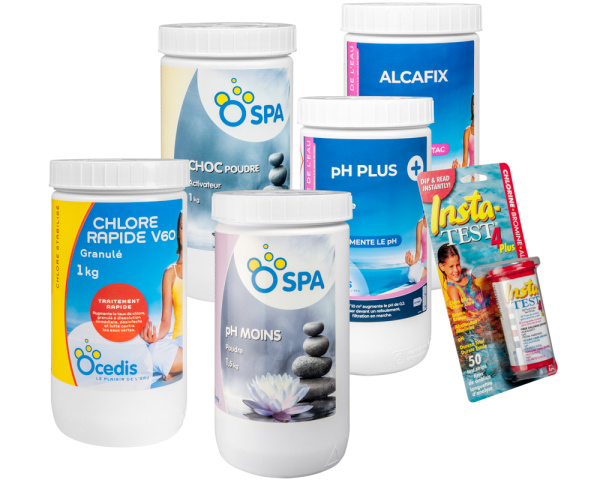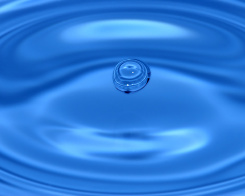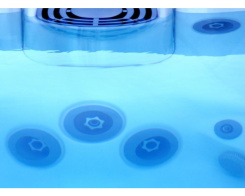How to use chlorine in your hot tub
The three types of disinfectant most commonly used in hot tubs are chlorine, bromine and active oxygen. Chlorine has the advantage of taking effect immediately, and being inexpensive and effective, even at very low concentrations.
If you treat your spa with chlorine, or want to start doing so, this page contains information that may help you.
After draining or restarting the spa
If you're changing the water or if your spa has been off for a while, it is likely that biofilm has developed in the pipework. You should start by rinsing everything with a biofilm remover to get rid of it. You can find the instructions on how to remove biofilm right here! It also explains how to make sure it doesn't come back (no one likes biofilm).
Regular treatment
You got rid of the biofilm? Yay! Now you can start on the regular treatment. If necessary, fill the spa with water, and follow these steps:
- Start by adding non-Chlorine Shock, at a rate of 15 g per 1000 litres of water. This will eliminate the bacteria present in the water.
- Then add the granules or effervescent tablets of chlorine directly to the spa or diluted in a bucket of water beforehand. For quantities, allow 15 g of granules or 5 effervescent tablets per 1000 litres of water.
Ideally, you should check your free chlorine levels every day, just before swimming. This rate should be closer to 3 ppm (the conversion from ppm to mg/l is easy: 1 ppm = 1 mg/l).
Two measurement methods are possible: with Aquacheck or InstaTest test strips (a fast but imprecise method) or with an analysis kit containing DPD1 tablets, which allows for more accurate measurements, but takes longer.
One 15 g teaspoon of HTH granular chlorine in a clean 1000-litre spa will increase the rate by 2 ppm. If chlorine level is 0, the water is no longer disinfectant and bacteria have started to proliferate. If the level has been at 0 for only a few hours, you can "catch up" with your water by adding a shock product, such as active oxygen. If the level has been at 0 for several days, the situation is more serious because biofilm will have formed.
"Shock" your water regularly
Using shocking agents is important, since chlorine will act against bacteria each time the spa is used, but it will gradually become saturated (free chlorine will react with the bacteria to form combined chlorine instead, which smells and isn't effective in disinfecting your spa). Shocking with non-chlorine shock the water will destroy some of the combined chlorine.
Check the pH value
Chlorine is very sensitive to the pH of your water, you still need to adjust it ideally to ensure good treatment stability. A good pH is between 7.0 and 7.6.
- If the pH is too low you will have to use pH plus
- If the pH is too high you will have to use pH minus
If you notice that the TAC (total alkalinity) of the spa is too low, add a little pH stabiliser.
You can also find the main products needed for processing in the form of boxes.


